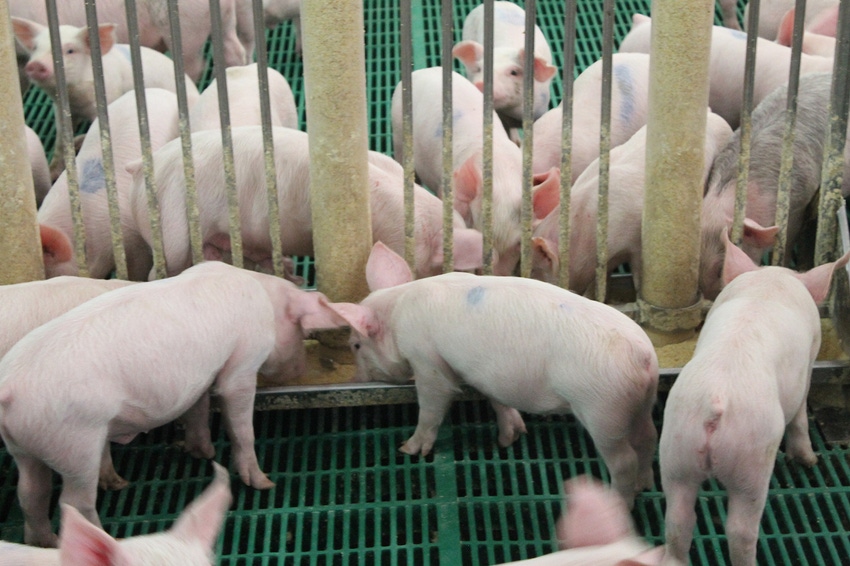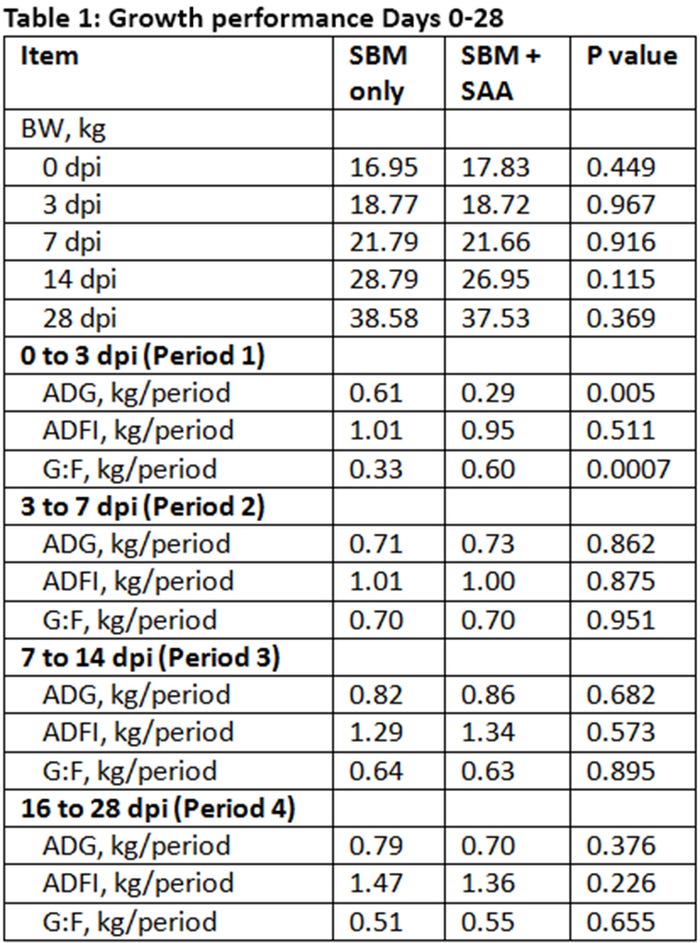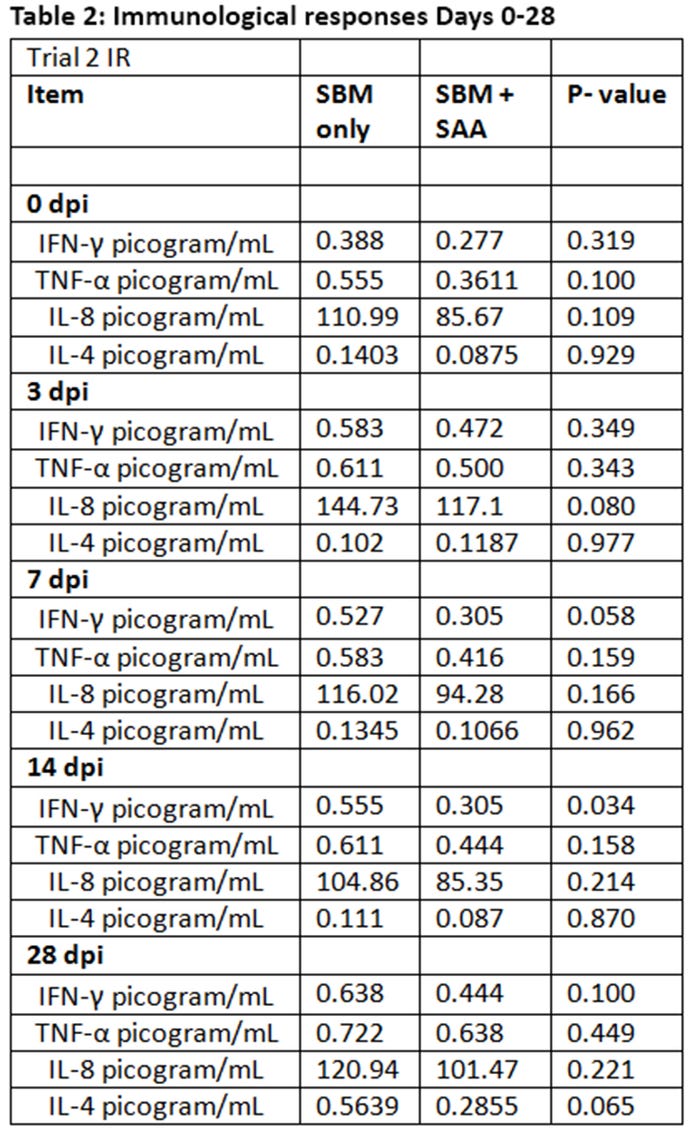Soybean meal proves effective in reducing PRRS challenge in pigs
Study was conducted to evaluate the effects of dietary soybean meal concentration on growth performance and immune response of nursery pigs infected with PRRSV in an attempt to understand the mechanism by which SBM influences pig response to PRRS.
January 5, 2017

By Bob Thaler, Crystal Levesque and Maverick Fiene, South Dakota State University
Porcine reproductive and respiratory syndrome virus is the No. 1 swine disease in the world and costs the U.S. swine industry $640 million per year (Holtkamp et al., 2012). However, despite more than 25 years of intensive research, PRRSV continues to dramatically impact swine producers worldwide.
Stringent biosecurity, along with targeted vaccination and/or herd health plans, has reduced the incidences of PRRSV outbreaks, but more tools are needed to reduce its severity. Previous research on the interaction between PRRS and nutrition has been focused on additives and nutrients, but little is known about the effects of specific feed ingredients on PRRS-infected pigs. While soybean meal is the primary source of dietary amino acids for swine in the United States, it also contains multiple biologically active compounds, including saponins, proteins, peptides and isoflavones (Omoni and Aluko, 2005). These compounds have demonstrated antiviral, antioxidant and anti-inflammatory activities against certain viruses and microbiota (Hämäläinen et al., 2007; Andres et al., 2009). Rochell et al. (2015) observed improved average daily gain (370 grams per day versus 451 grams per day) of PRRSV-infected nursery pigs fed a diet containing 29% SBM versus pigs fed a diet containing 17.5% SBM.
Also, Johnston et al. (2010) and Rocha et al. (2013) observed these same improvements when pigs were fed a higher inclusion level of SBM, (32% versus 21%, and 22.5% versus 12.5%, respectively). Therefore, the current study was conducted to evaluate the effects of dietary SBM concentration on growth performance and immune response of nursery pigs infected with PRRSV in an attempt to understand the mechanism by which SBM influences pig response to PRRS.
One hundred mixed-sex, iso-wean pigs (3 weeks of age) were purchased and shipped 100 miles to the research facility. Initially, there were five gilts per pen in each of the 20 pens. All pigs were fed common commercial Phase 1 (five days) and Phase 2 (five days) nursery diets, and then switched to one of the two experimental diets for two weeks. The two experimental diets differed in source of amino acids: either SBM or synthetic amino acids plus SBM. The low SBM diet with added synthetic amino acids contained 30.5% SBM, and the high SBM diet contained 43.2% SBM. The diets were formulated to be isocaloric, and contained equal concentrations of standardized ileal digestible lysine, tryptophan, threonine and methionine.
After being on the experimental diets for two weeks, the medium-weight pig of every pen was moved to the hoop barn at the research site to serve as sentinel animals for our biosecurity protocol, and the 80 pigs left in the confinement barn (four pigs per pen) received either a PRRS or sham challenge.
Half the pigs per pens were intranasally and intermuscularly inoculated with 1 milliliter each of either 1 x 106 fluorescent focus units per milliliter (FFU/mL) dose of PRRSV (MN-184 isolate, South Dakota State University, Brookings, S.D.) or a sham control.

Serum samples, pig weights and feed intakes were obtained on 0, 3, 7, 14, 28 days post-inoculation to measure disease response and immune system activity through a battery of different assays. This allowed us to identify which specific part(s) of the immune system were being affected. Pigs were also weighed on all bleed dates and weekly the first month post-inoculation, and then every two weeks until pigs reached an average weight of 275 pounds. Pen feed disappearance was measured in conjunction with pig’s growth performance. General pig health (i.e. lethargy, coughing, anorexia), morbidity and mortality were monitored throughout the trial.
The results of the trial are:
- Pigs fed SBM had better daily gain and feed efficiency three days after the PRRS challenge than pigs fed high levels of synthetic amino acids
- However, the difference was not observed for all other time points past Day 3
- We had no pigs die from the PRRS challenge, nor did we see any morbidity in any of the pigs
- Our biosecurity protocol was effective since none of the negative control pigs in the hoop barn seroconverted
- Serum PRRS titers we observed were similar to what would be expected in a PRRS outbreak in a commercial operation
- Serum PRRS titers were not different between treatment groups
- There were some treatment differences for different cytokines on different observation days
o At 3 dpi, SBM fed pigs tended to have higher IL-8 concentration
o Serum concentration of INF-γ (Interferon Gamma) tended to be higher for the SBM group at 7 dpi
o At 14 dpi, serum concentrations of IL-4 (Interleukin-4) and INF-γ (P=0.0246 and P=0.034) respectively, were higher in pigs of the SBM group
o INF-γ also tended to be higher (P=0.08) at 28 dpi in the SBM group as well

In summary, pigs fed diets containing 43% SBM initially performed better in the period immediately following PRRSV inoculation, both in growth performance and immune response. This response is similar to what (Rochell et al., 2015) observed. On days 7, 14, and 28 post-PRRS challenge, there were differences in cytokine production due to dietary treatment. However, there was no continued improvement in pig performance past Day 3 between dietary treatments. While the initial results are promising, more work still needs to be done to further develop this concept.
This trial was supported by the South Dakota Soybean Research & Promotion Council, the Minnesota Soybean Research & Promotion Council and the North Dakota Soybean Council.
You May Also Like



